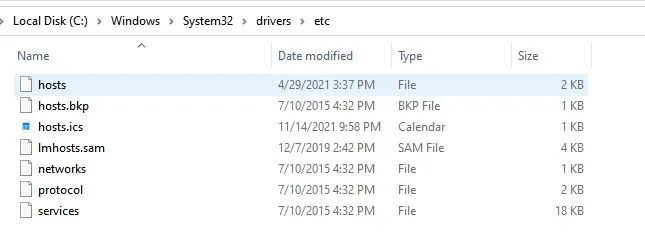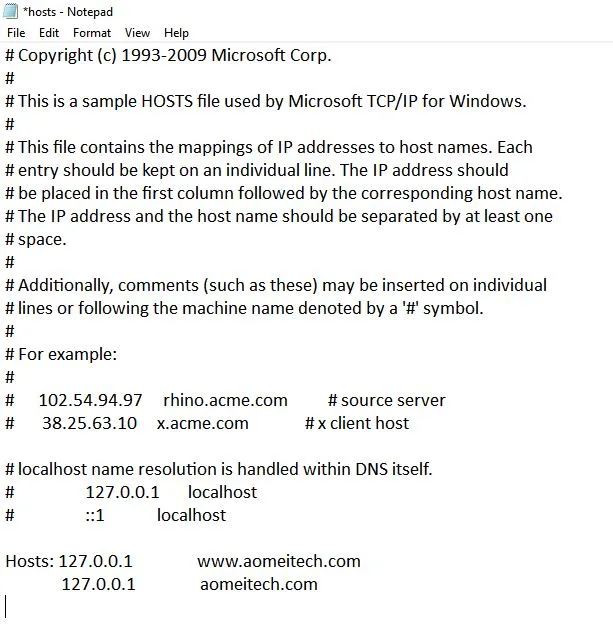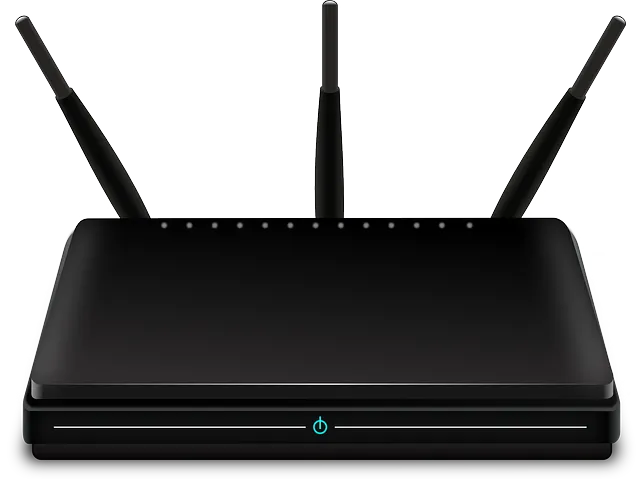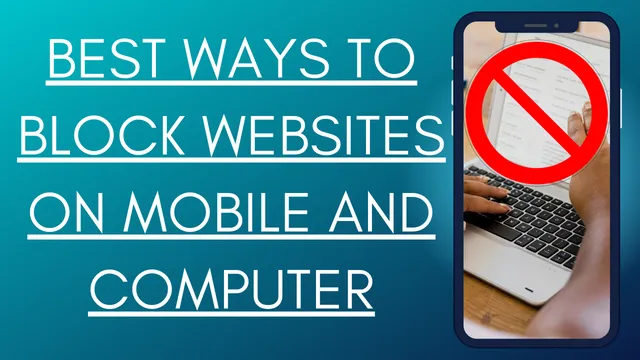How to block websites on mobile and PC ?
The Internet is a good thing in and of itself, but if your children are using the computer or mobile device, you should make sure that only adult-friendly websites are displayed. By blocking websites, you can not only protect your children from inappropriate content, you can also protect yourself from distraction. In the following tips we will tell you how you can block websites on your PC or Mac, a mobile phone or directly on the router.

- On a PC or Mac, you can block websites through the hosts file. This is available on every computer and is accessed via an editor.
- On Android, you need an additional app on your cell phone for website management (and therefore also for blocking certain websites).
- On the iPhone or iPad, you can either block specific websites or directly block all adult content. In contrast to Android, you do not need an additional app for this, but can make the adjustment directly via the settings.
Blocking websites on PC (Windows machine)
If you are a Windows PC user, you can block individual websites via an entry in the hosts file. This is available on every computer and is accessed via an editor. The relevant entry ensures that the selected page is blocked on the entire system, regardless of which browser it is accessed with. The hosts file is a nondescript text file hidden deep within Windows and only accessible to administrators.
To block a website in Windows 10, open Notepad (or another text program of your choice) as an administrator and do the following:
- Press Ctrl+R and enter the path “C:\Windows\System32\drivers\etc“.

- Open the hosts file and enter the website to be blocked in the format “127.0.0.1 www.yourweburl.com”, where 127.0.0.1 corresponds to the local IP address of your computer.

- Save the file and then use your browser of choice to check if the page is blocked as you want.
Blocking websites on a Mac
There are two ways to block websites on a Mac: you can either activate parental controls via the system preferences or, similar to Windows, edit the hosts file.
Block websites via parental controls
The simplest method is to activate child safety:
- Go to the Apple icon in the top left and select the “System Preferences” entry.
- Click Users and Groups and then click the plus icon in the bottom left.
- Select the Managed with Parental Controls option to enable parental controls for the group being created.
- Enter the required information about the user group (account, name, etc.) and click on “Create user“.
- Now switch back to the system settings and select the “Parental Controls” tab in the top menu.
- Here again you have the choice between three options:
-
- “If possible only adult-free websites” blocks all pornographic content as far as possible.
- Via “Customize” you can enter pages that are not allowed to be accessed.
- “Allow access only for these websites” activates the whitelist so that only the websites you specify can be accessed.
7. Confirm your entries with “OK“. The restrictions are now valid regardless of the browser.
Block websites via the hosts file
Alternatively, just like on Windows, you can also block websites on the Mac via the hosts file. The corresponding code lines are called up via the terminal.
- Launch the terminal from Utilities or Spotlight search and type the command
|
1 |
sudo /bin/cp /etc/hosts /etc/hosts-original |
You may also have to confirm this with your administrator password.
- The hosts file opens. You will find the local IP address (e.g. 127.0.0.1) that you need to enter the Internet pages on the left-hand side.
- Go to the very end of the hosts file and press Enter to open a new line.
- Now enter the local IP address followed by the URL of the website to be blocked. Note that each website needs its own line in the same format.
- Save your changes via Ctrl + O and Enter and close the hosts file via Ctrl + X.
- You are still in the terminal.
- The last step is to clear your Mac’s DNS cache for the changes to take effect .
- This works using the line of code
|
1 |
sudo killall -HUP mDNSResponder;say DNS cache has been flushed |
Neither making an entry in the hosts file nor activating the child safety device allows time-controlled blocking of websites (e.g. on specific days or at specific times). If you want to use such functions, you need an additional app or software for blocking (e.g. Self Control or Cold Turkey )
Block websites on Android

To block websites on an Android device, you can use various methods depending on your requirements and the level of control you want. Here are a few options:
- Use a Parental Control App: There are several parental control apps available on the Google Play Store that allow you to block specific websites. These apps usually offer additional features like time restrictions and content filtering. Some popular options include Norton Family Premier, Qustodio, and Kaspersky SafeKids.
- Modify Hosts File (Rooted Devices): If your Android device is rooted, you can modify the hosts file to block websites. The hosts file is a system file that maps domain names to IP addresses. By redirecting unwanted domain names to localhost (127.0.0.1), you can effectively block them. You’ll need a file explorer app with root access to edit the hosts file. Note that modifying system files can be risky, so proceed with caution.
- Use a Third-Party Browser with Built-in Blocking: Some web browsers, like Firefox and Brave Browser, have built-in features that allow you to block specific websites. These browsers offer enhanced privacy and security features, including the ability to block unwanted content.
- Enable Safe Browsing in Chrome: The Google Chrome browser has a Safe Browsing feature that warns you about potentially dangerous websites. While it may not provide full blocking functionality, it can help protect you from harmful websites. To enable Safe Browsing in Chrome, open the browser, go to Settings > Privacy > Safe Browsing, and enable the feature.
Remember that these methods may have limitations and can be bypassed by determined users. If you need stronger and more comprehensive website blocking, you might consider using a combination of these methods or employing a dedicated network-level solution, such as a router-based parental control system or a DNS filtering service.
Block websites on iOS
On the iPhone or iPad, you can either block specific websites or directly set a full block for all adult content. In contrast to Android, you do not need an additional app for this, but can make the adjustment directly via the settings.
- Go to the Settings app on your iPhone or iPad and navigate to the “General” entry.
- From there, select the “Screen Time” item and then tap on “Restrictions”.
- If you have set up a code for Screen Time, you must now enter it.
- Enable the option and after that go to the “Content Restrictions”.
- Here you can choose what content you want to block on the device.
- To block websites, go to the “Web Content” entry.
- Choose whether you want to restrict all adult content in general or access a list you create. It is also possible to specify that this device may only be used to access websites that you have entered yourself.
- Click on “Add website” to enter the address of the content to block or unblock.
The website restriction is applied to both the Safari browser and all other affected apps on the iPhone or iPad.
Block websites directly on the router
To block websites directly on your router, you will need to access the router’s administration settings. The specific steps may vary depending on the router model and firmware you are using. However, I can provide you with a general overview of the process:

Determine the IP address of your router: This address is usually printed on the router itself or can be found in the user manual.
- Open a web browser on a device connected to the same network as your router.
- Enter the IP address of your router in the address bar of the browser and press Enter. This should open the router’s administration interface.
- You will be prompted to enter the administrator username and password. If you haven’t changed these before, refer to the router’s documentation or use default credentials. Common usernames are “admin” or “administrator,” and common passwords can be “admin,” “password,” or they may be left blank.
- Once you have logged into the router’s administration interface, look for a section or menu related to “Access Control,” “Parental Controls,” “Firewall,” or “Security.”
- Within the appropriate section, you should find an option to configure website blocking or URL filtering. The specific terminology may differ, but it generally allows you to create a blacklist of websites.
- Add the URLs or domain names of the websites you want to block to the blacklist. You may be able to enter specific web addresses (e.g., www.example.com) or block entire domains (e.g., example.com).
- Save your changes and exit the router’s administration interface.
After following these steps, the router should start blocking access to the specified websites for all devices connected to your network. Keep in mind that the effectiveness of this method may vary depending on the router model and firmware version you have.
If you encounter any difficulties or cannot find the necessary options, consult your router’s user manual or contact the router manufacturer’s support for more specific instructions.
Hope you like this article useful on How to block websites on mobile and PC ? Please help in spreading this information to all needy people.
Suggested Reading:
- 7 Best Linux Distributions for Home Users
- All about Chat GPT in its way
- Before Hackers Attack: How to protect your online accounts?
- Understanding VPN and How to use it?
- How to clear your browser search history?
- Different Types of Processor Socket in Motherboard
- Windows Vs Linux which OS is best for you?
- Complete Solid State Drive (SSD) Guide
- How to speed up Windows 10?
- How to change or configure DNS in Windows?

